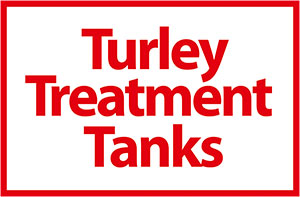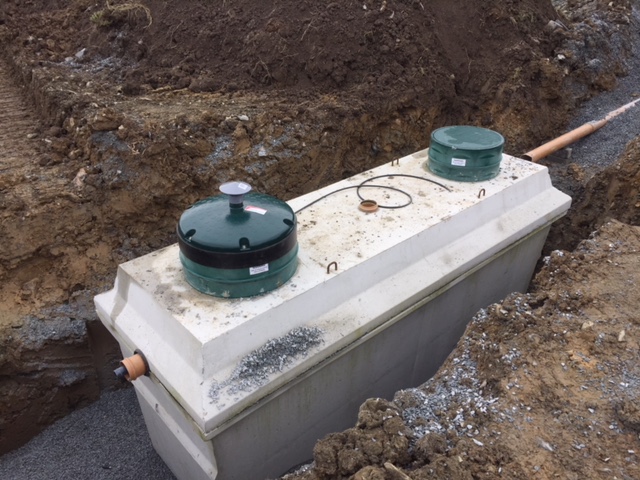How do waste water treatment tanks work?
It is usual for waste water treatment tanks to be gravity fed which means they don’t need electricity to pump waste water into the tank. However, in some instances a pumping system is required in order to pump waste water into the tank particularly if the tank is located at a higher level to sewer pipes. This can also mean that a non return valve is used to prevent waste water flowing backwards. Some systems use a combination of gravity and pumping to ensure waste water reaches the tank. Once the waste water reaches the tank any solids within the tank settle to the bottom of the tank.
Turley concrete tanks use a sequence batch reactor system which works using anaerobic digestion to digest and treat waste water. When waste water is flushed into the tank from the house, the black water settles and oxidation and nitrification takes place where ammonia is oxidised to nitrite using oxygen. It is bacteria like Nitrosomonas present in the waste water which help to nitrify the ammonia. Other bacteria such as Nitrobacter oxidise nitrite in the oxygen rich nitrate by using nitrogen compounds as their energy source. The process requires oxygen and carbon dioxide for the organisms to grow and flourish. This enables effluent to be broken down more efficiently. The tank process of fill, chemical reaction, settling of biomass, and the withdrawal of effluent all occurs in one tank and no electricity is required to operate pumps to cycle the waste.
Biochemical oxygen demand
BOD5, or five day biochemical oxygen demand is the level of oxygen which the bacteria to decompose any organic waste for five days aerobically. Chemical reactions enable organic waste to be broken down organically reducing odours ensuring that waste is treated efficiently.
A sewage treatment plant will effectively treat the waste water and effluent from your home using the system of aeration described above. A septic tank will only treat waste water and effluent using a system of basic settlement. Where septic tanks will treat waste water and effluent at 25% efficiency, a waste treatment plant will treat effluent with 99% efficiency. So it’s easy to see why a waste treatment plant is vastly more desirable than a septic tank. In particular, from an environmental point of view, septic tanks have a much greater risk of groundwater pollution due to soakaways getting clogged with solids. This can lead to further pollution of streams and rivers with suspended solids. If you want to ensure that you reduce pollution events, protect your water supply and the environment, it’s vital to use a waste water treatment plant which will neutralise the effluent and waste water from your home.
notes
The amount of oxygen reported with this method represents only the carbonaceous oxygen demand (CBOD) or the easily decomposed organic matter. BOD5 is commonly used to measure natural organic pollution
Chemical Oxygen Demand (COD): COD is defined as the oxygen equivalent of the organic portion of the sample that is susceptible to oxidation by a strong chemical oxidant potassium dichromate K2Cr2O7,
For More Info click here
Get in touch to discuss your wastewater treatment tank needs




